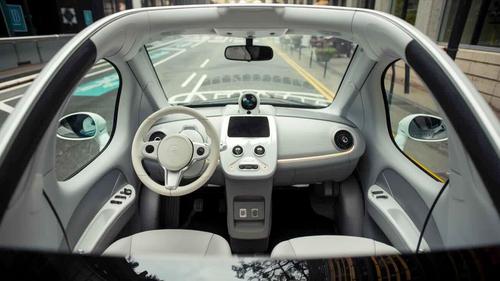BYD vs. Tesla: A Comprehensive Financial Analysis and Investment Outlook
Key Takeaways
- Performance Metrics: BYD has outperformed Tesla in year-to-date returns and has shown lower volatility, although Tesla has historically delivered higher long-term returns.
- Market Dynamics: BYD is rapidly closing the gap with Tesla in global EV market share, driven by its cost-effective and innovative battery technology.
- Financial Health: Tesla maintains a significantly larger market cap and higher earnings per share, but BYD offers a more attractive valuation with a lower PE ratio and higher dividend yield.
- Technological Advancements: BYD’s advancements in Lithium Iron Phosphate (LFP) battery technology provide cost, safety, and longevity advantages over Tesla’s offerings.
- Strategic Considerations: Both companies face unique challenges and opportunities, with Tesla focusing on high-margin energy storage and autonomous driving, while BYD leverages its broad consumer base and expanding international presence.
Introduction
Performance Metrics
Year-to-Date and Historical Returns
BYD has shown a year-to-date (YTD) return of 3.05%, significantly outperforming Tesla’s -19.96% return. Over the past year, BYD’s return was -17.61%, while Tesla’s was -21.66%. However, Tesla has historically delivered higher long-term returns, with a 5-year annualized return of 66.73% compared to BYD’s 37.86%, and a 10-year annualized return of 28.32% versus BYD’s 16.14%.
Risk-Adjusted Performance
When considering risk-adjusted performance metrics, BYD and Tesla both exhibit negative Sharpe and Sortino ratios, indicating that their returns have not adequately compensated for the risk taken. BYD’s Sharpe ratio is -0.53, while Tesla’s is -0.43. Similarly, BYD’s Sortino ratio is -0.60 compared to Tesla’s -0.33. Both companies also show negative Calmar and Martin ratios, reflecting significant drawdowns and volatility.
Volatility and Drawdowns
BYD has demonstrated lower volatility with a daily standard deviation of 34.00%, compared to Tesla’s 54.18%. BYD’s maximum drawdown is -87.26%, while Tesla’s is -73.63%. Currently, BYD’s drawdown stands at -32.66%, whereas Tesla’s is -51.49%, indicating that Tesla has experienced more significant recent declines.
Financial Health
Market Capitalization and Earnings
Tesla’s market cap is substantially larger at $635.35 billion, compared to BYD’s $89.50 billion. Tesla also has a higher earnings per share (EPS) of $3.55 versus BYD’s $2.90. However, BYD’s price-to-earnings (PE) ratio is more attractive at 19.23, compared to Tesla’s 56.02, suggesting that BYD may be undervalued relative to its earnings.
Revenue and Profitability
BYD’s total revenue over the trailing twelve months (TTM) is $464.99 billion, significantly higher than Tesla’s $95.32 billion. BYD also boasts a higher gross profit of $99.28 billion compared to Tesla’s $16.89 billion. In terms of EBITDA, BYD leads with $33.98 billion, while Tesla reports $12.72 billion. These figures highlight BYD’s strong revenue generation and profitability.
Dividends
BYD offers a dividend yield of 1.54%, providing an additional income stream for investors. In contrast, Tesla has not paid any dividends, focusing instead on reinvesting earnings into growth and innovation.
Technological Advancements
Battery Technology
BYD’s advancements in Lithium Iron Phosphate (LFP) battery technology have positioned it as a leader in cost-effective, safe, and long-lasting battery solutions. The LFP batteries are generally more affordable to produce than traditional nickel-based chemistries, offering a longer lifespan and enhanced safety. BYD’s Blade Battery, a structural LFP pack, is noted for its higher safety and better energy density, contributing to the overall performance and efficiency of its vehicles.
Competitive Landscape
Tesla’s battery technology, while advanced, faces competition from BYD’s innovative solutions. Tesla’s vehicles, such as the Model 3, use both LFP and nickel-based batteries, offering a range of up to 390 miles. In comparison, BYD’s Seal EV, with its LFP Blade Battery, offers a range of up to 404 miles, positioning it as a competitive alternative to Tesla’s offerings.
Market Dynamics
Global Market Share
As of the second quarter of 2024, Tesla holds a 19% market share of global battery electric vehicles (BEVs), while BYD is very close with an estimated share around 19%. BYD’s market share has increased significantly, reflecting its aggressive expansion and competitive pricing strategy. In the Chinese market, BYD dominates with a 65% share of hybrids and 59% of BEVs, while Tesla’s presence is more pronounced in the U.S. market.
Sales and Production
BYD’s sales performance has been impressive, with nearly 800,000 cars sold per quarter compared to Tesla’s 435,000. BYD’s international sales surged by 156% year-over-year in June 2024, with nearly 1 million new energy vehicles sold in Q2 2024. Tesla, on the other hand, has faced a slowdown in demand, with deliveries shrinking year-over-year in the first two quarters of 2024.
Tariffs and Market Entry
The new tariff on Chinese-made cars, announced in May 2024, could impact BYD’s sales in the U.S. market, potentially hindering its expansion plans. However, BYD’s competitive pricing and innovative technology may help it navigate these challenges and continue its growth trajectory.
Strategic Considerations
Tesla’s Focus Areas
Tesla is focusing on high-margin energy storage solutions and autonomous driving technology. The company’s energy storage deployments reached a record 9.4 GWh in Q1 2024, with expectations of at least 75% growth in 2024. Tesla’s advancements in autonomous driving and AI are anticipated to provide a significant edge in the EV market over the next several years.
BYD’s Growth Strategy
BYD is leveraging its cost-effective battery technology and broad consumer base to expand its market presence. The company’s partnership with Uber to add 100,000 electric vehicles to its platform highlights its strategic initiatives to enhance growth prospects. BYD’s focus on safety, longevity, and affordability positions it well to compete with Tesla and other EV manufacturers.
Conclusion
Both BYD and Tesla are formidable players in the EV market, each with unique strengths and challenges. BYD’s advancements in LFP battery technology, strong revenue generation, and competitive pricing make it an attractive investment, particularly for those seeking growth in the rapidly expanding EV market. Tesla, with its larger market cap, higher earnings per share, and focus on high-margin energy storage and autonomous driving, offers significant long-term potential.
For individual investors, the choice between BYD and Tesla depends on their investment strategy and risk tolerance. BYD may appeal to those looking for a more affordable entry point and exposure to the Chinese market, while Tesla’s innovative technology and market leadership provide a compelling case for long-term growth. Ultimately, both stocks offer promising opportunities in the evolving EV landscape, and a diversified approach may be the best strategy to capitalize on the strengths of each company.


